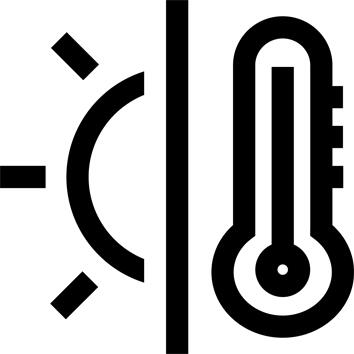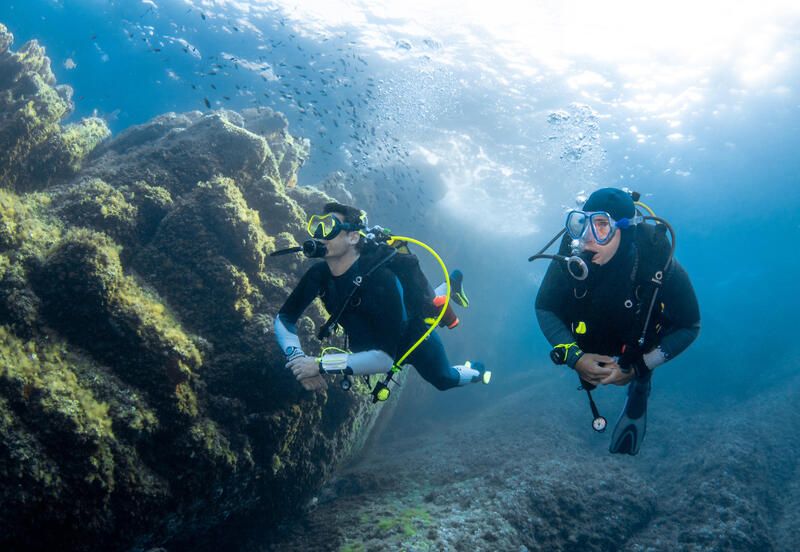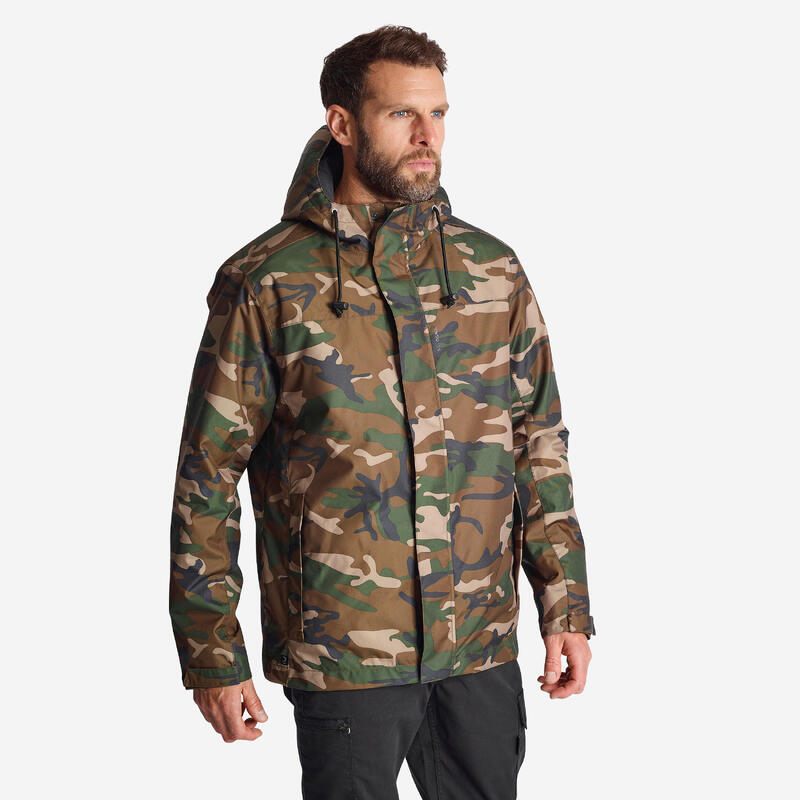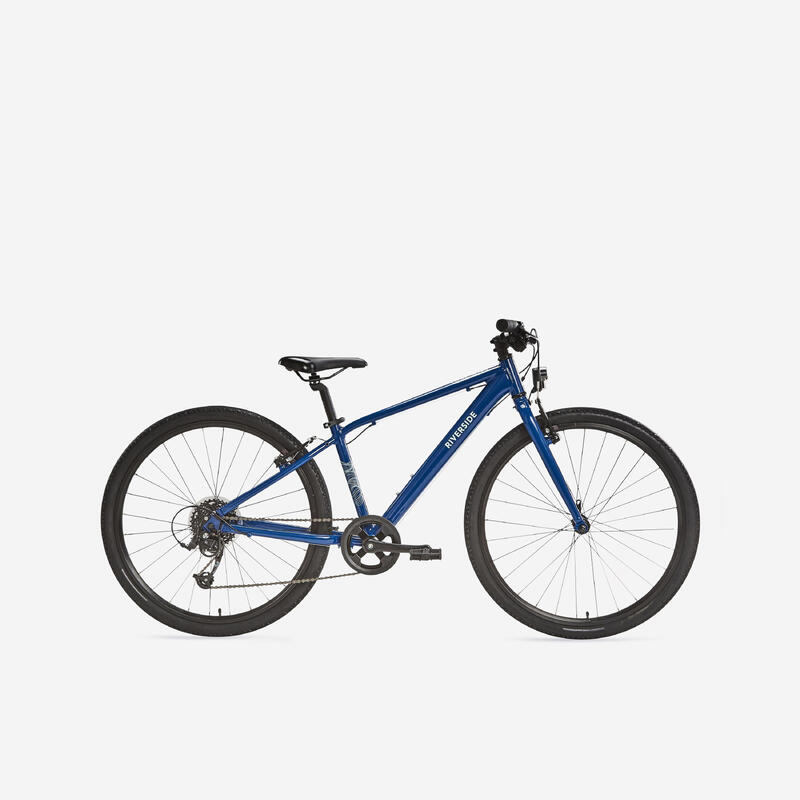Thermal insulation details
Wet one-piece made of 5.5 mm 100% stretch panels (with production tolerances). The neoprene foam is 5 mm, covered on both sides with nylon fabric.
Neoprene distribution:
Thermospan on the bust and back to increase the feeling of warmth,
100% stretch over the entire suit, smooth Glideskin sleeves on the ends: the smooth part is turned inside out to stick to the skin and limit water entry and circulation.
Zipper construction and suit assembly
The back zipper is constructed with two overlapping panels of smooth neoprene to minimize water ingress.
The wetsuit's seams are GBS (Glued and Blind Stitched): the neoprene is first glued, then sewn for added strength (the needle does not go all the way through the neoprene to prevent water infiltration).
Carabiner on upper thigh for attaching accessories.
Freedom of movement
One-piece with separate hood (not included). Stretch neoprene side panels (very soft, elastic neoprene) to facilitate morphological adaptability and to adapt as much as possible to different body shapes.
No seams under the armpits to facilitate arm mobility. Preformed cut on arms and legs, with cambered loins for ease of movement.
Zip at neck for comfort and to avoid trouble spots on the trachea.
Threading and unthreading the suit
Double sleeves with zippers on arms and legs for maximum comfort when dressing. To make back closure even easier, the zipper pull is extended.
reinforcements to limit wear
Ergonomic reinforcements at the knees (Supratex) and wear-resistant prints on the shoulders and lower back. These reinforcements limit the effects of friction caused by the environment or equipment.
The inner seams are stopped by patches to increase their strength.
Wrist protection to prevent computer rotation.
Thermal performance class
This scuba diving suit offers thermal protection tested by the independent institute INPP (Marseille-France) to validate its compliance with the current standard (NF EN 14225-1:2005).
The suit is approved CLASS C:
A (+7°C/+12°C / +45°F/+54°F)
B (+10°C/+18°C / +50°F/+64°F)
C (+16°C/+24°C / +61°F/+75°F)
D (+22°C/+30°C / +72°F/+86°F).
Modulate your thickness, modulate your heat!
When diving, the cold is our worst enemy! You need thermal protection to match the water temperature. To avoid having a wetsuit for every condition, the concept has been developed around 5 products that can be combined with your wetsuit depending on the temperature.
You can thus complete your thermal insulation with a balaclava, a neoprene top (mouse), a top with balaclava, an undershorty 1 mm or an overshorty 5.5 mm.
What is a wet suit?
This type of wetsuit is the most common on the market. Its purpose is not to act as a barrier to the water, but rather to trap it and allow your body to warm it up, creating a thermal buffer between you and the outside world. Made from neoprene - a rubber polymer filled with air bubbles - these wetsuits come in thicknesses from 0.5 to 7 mm . As such, they make excellent diving suits because they are flexible and modular.
Tips for putting on your wetsuit
Slip your foot into a plastic bag, then tuck your leg into your wetsuit. Your foot will pop out fully and snugly! To adjust it, ask a third party to blow into your sleeve from the wrist. The air intake inflates the inside of the neoprene suit and instantly lifts it off your skin. You can then easily make final adjustments.
Tips for maintaining your wetsuit
1) After each session, soak the suit in clear water on both the inside and outside.
2) Use a bactericidal solution to sanitize.
3) Rinse well in clear water.
4) Dry on a wide hanger in a shaded, well-ventilated area. Caution: the sun discolors the textile parts of the suit and accelerates the aging of the neoprene. Zippers can be cleaned with a toothbrush, and lubricated with silicone grease.














